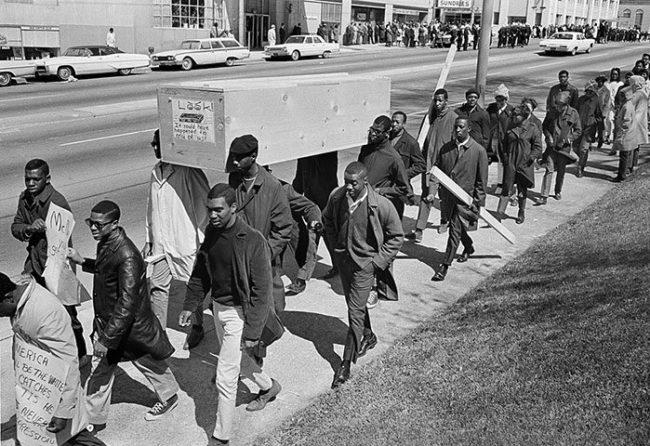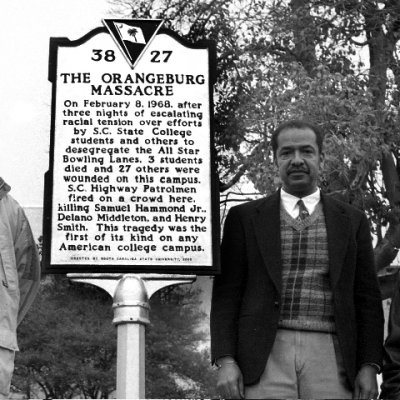The 1968 Orangeburg massacre is regarded as one of the most violent and least remembered events of the civil rights movement. It claimed the lives of three African-American students and caused injuries to 28 others.
What then caused Highway Patrolmen to open live fire on protesting students of the South Carolina State University?
Black students had become fed up with the segregation policy which barred them from accessing the Orangeburg’s only bowling alley. On February 8, 1968, a crowd of students gathered on the campus of South Carolina State to protest segregation at Orangeburg’s only bowling alley after days of tension.

The students started a bonfire and held a vigil on the campus and soon enough dozens of police arrived on the scene, but instead of ensuring peace, the state troopers fired live ammunition into the crowd representing the first time such a scene was recorded on any American college campus. Yet the killings and harm caused received little national media coverage.
In an example of how prejudice cloud sound judgment, the nine officers who opened fire that day were all acquitted, instead Cleveland Sellers, a student and member of the Student Nonviolent Coordinating Committee (SNCC) was the only person convicted of wrongdoing. 36 witnesses stated that they did not hear gunfire coming from the protesters on the campus before the shooting and no students were found to be carrying guns.
Sellers was convicted of a riot charge and spent seven months behind bars. He was, however, pardoned in 1993. He would later go on to be president of a South Carolina college.
Amy Goodman in her ‘This is Democracy Now!, The War and Peace Report,’ shed light on this tragic abuse of power by the state’s security forces.
The three killed were 19-year-old South Carolina State students Henry Smith and Samuel Hammond, and 17-year-old high school student Delano Middleton, who came to South Carolina State every day after school to see his mom and get a bite to eat.

An oral history project conducted by a reporter at the time Jack Bass, revealed accounts by surviving students of what really happened.
Robert Lee Davis recalled: “It was a barrage shots, and like I say, it was maybe six or seven seconds: Boom, boom, boom, boom, boom, boom, boom, boom, boom! Students was hollering, yelling and running. So, by this time, I went into a slope right near the campus, by the front end of the campus, and I kneeled down. I got up to run, and I took one step. And that’s all I could remember. I took that one step. I got hit in the back. When I got hit in the back, this is when I got paralyzed. Students was trampling over me, because they was afraid.”
Harold Riley stated: “Just so happened there was a trash can in front of me. I was under pretty good coverage there with that trash can, see, but the trash can had some legs under it. And that’s how I got shot in the hip. The bullet come under the leg under the trash and caught me in the hip, under the trash can and caught me in the leg. If it wasn’t for the trash can, I probably would have been dead. If I would have stood up, I would have been dead. But I had enough courage to stay there for at least 45 seconds after the shooting. And folks was running all across me, crying and shooting. Some of them was crawling. And I realized they did a ceasefire. That’s when I got up and ran to the infirmary.”

On the 40th anniversary of the Orangeburg massacre, Amy Goodman spoke to Cleve Sellers who submitted: “It was just a clear case of the police opening fire without any provocation. There was no exchange of gunfire. The students were unarmed. And what precipitated it was the fact that the students on that Monday night went down to the bowling alley to try to bowl. And on Tuesday night when they went down, they were arrested. And at that point, you know, the state had kind of in mind a kind of Watts riot, and so they began to gear up. And on the night of February the 8th, it probably was 300 law enforcement officers in Orangeburg, and that included the FBI and Army Intelligence and the National Guards, the local and state police. So it was kind of an armed camp there. There were so many police that they could actually have walked on the campus and arrested every student on the campus, one officer could have gone over and arrested all the students around the campus.”

Cecil Williams, who photographed the scene in the aftermath of the Orangeburg massacre and has documented the civil rights movement in South Carolina in the ’50s also told Goodman: “No, this was really a situation in Orangeburg that should not have happened. It was 1968, years after Congress and President Johnson passed the Civil Rights Acts. But in Orangeburg, there was this pocket of resistance, a segregated bowling alley, that upon — any citizen walking along Russell Street in Orangeburg encountered this on an everyday basis. But it was the students of State and Claflin and others that got involved. They wanted to change that. This was something that should not have been allowed to exist at the time, but it was a reality. And unfortunately, the deaths and the wounding of so many students was a tragedy that we should never forget.”
The morning after the shooting, Cecil Williams came on campus having missed being shot himself because he was photographing aspects of student life for the year book. Shells he found were later used in the investigation to identify which Highway Patrolmen shot the students. In the trial, which took place in Florence, he was called in to testify.
“And I understand that in about 30 minutes they found them innocent. A tragedy. It was shocking. And even today, there has been no, really, assistance for the students who were wounded, nothing to even bury the students. So, it’s really even a tragedy that affects us today.”










